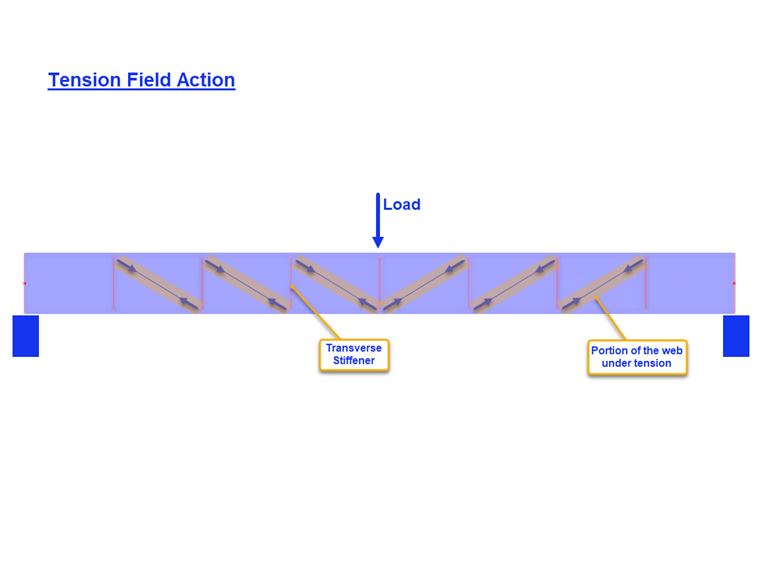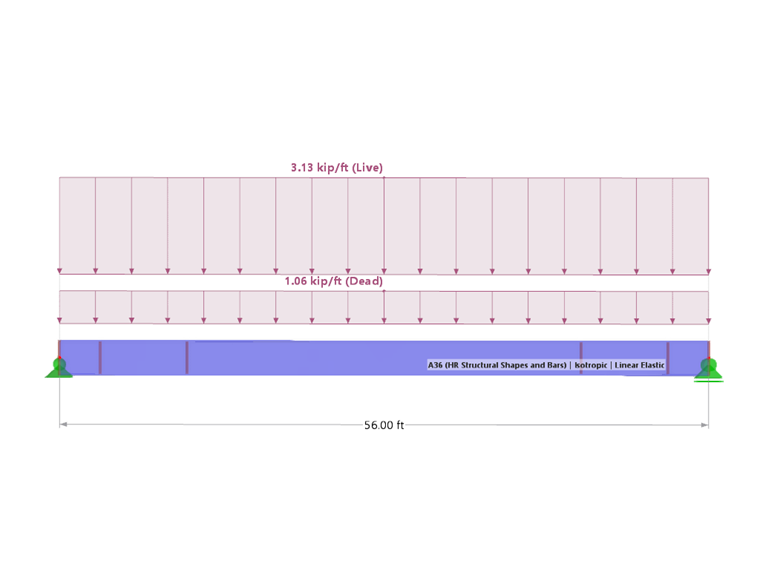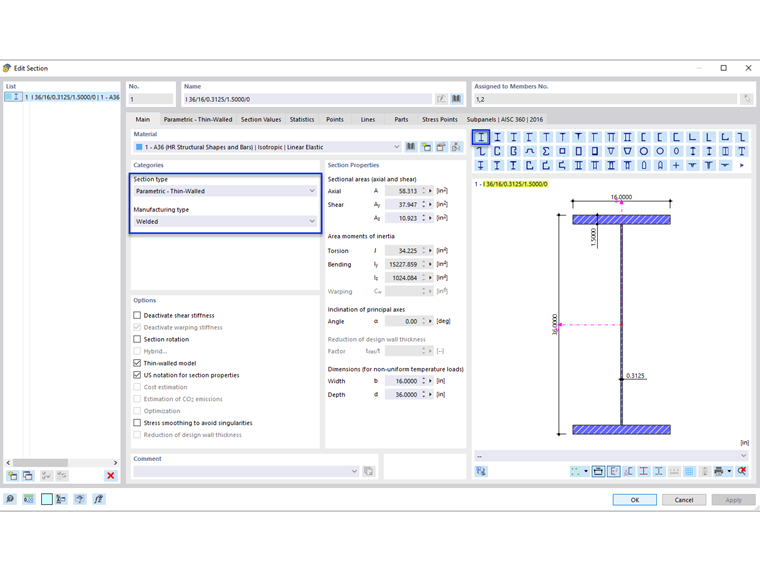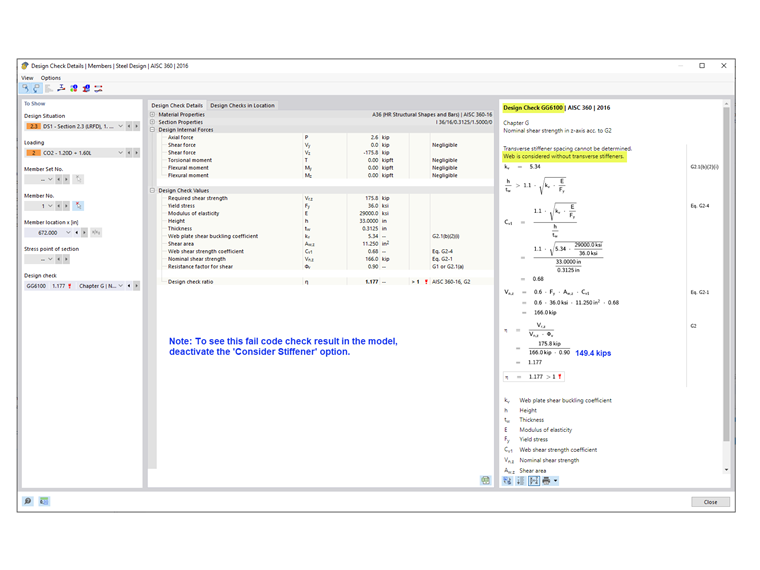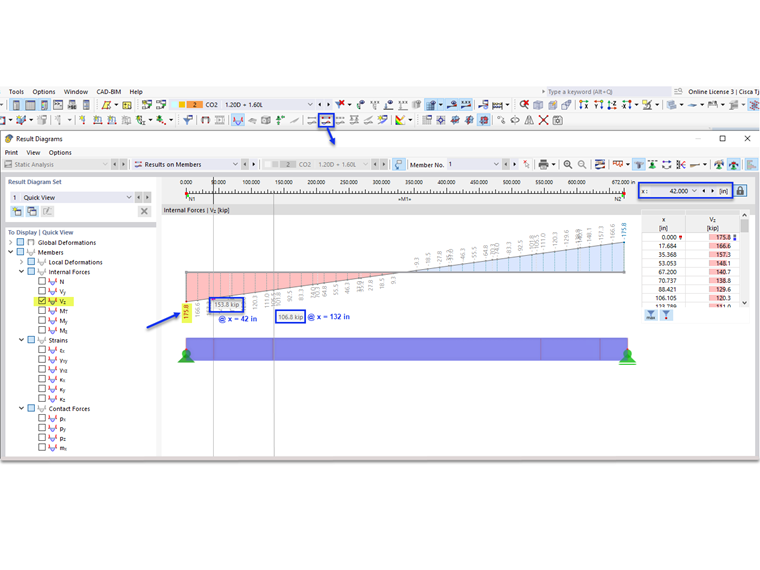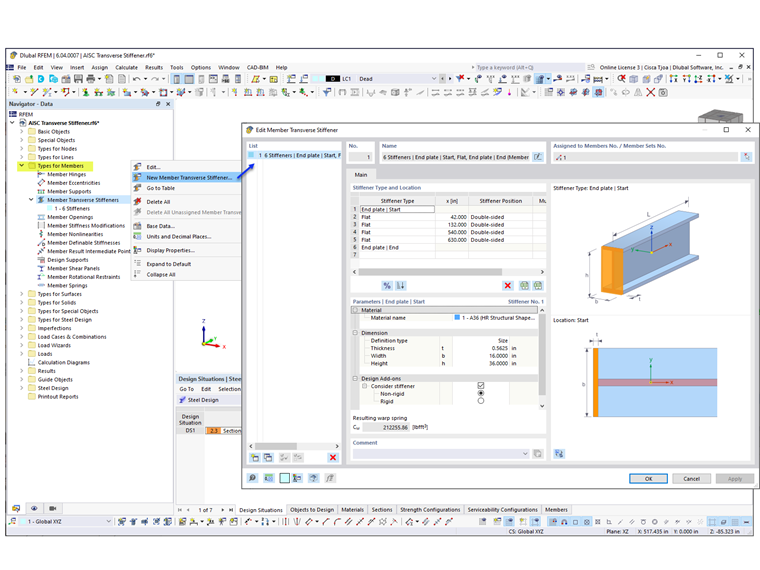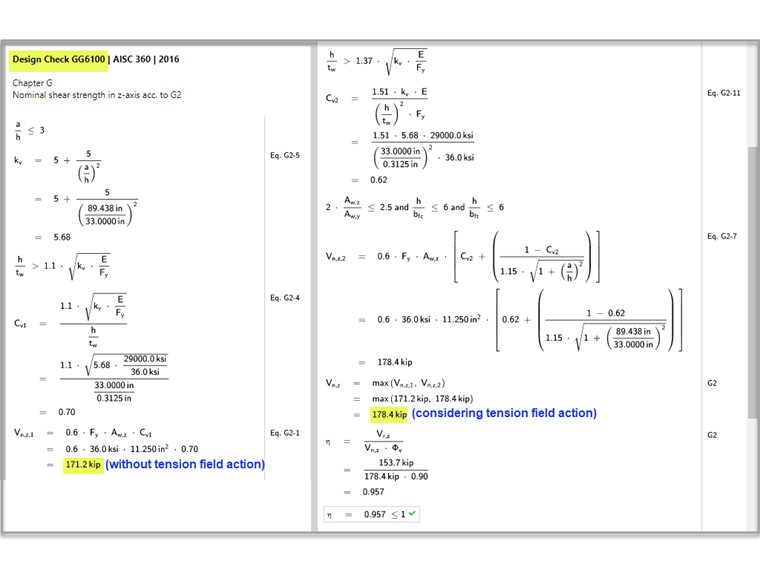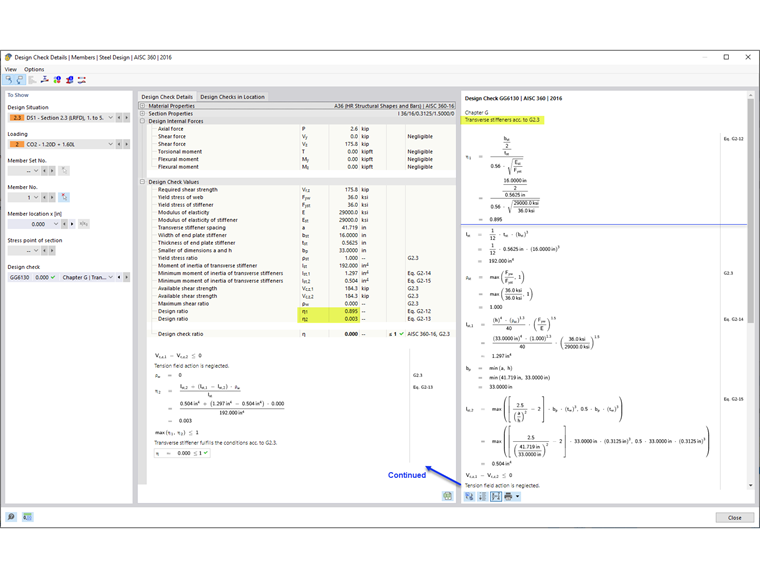在 RFEM 6 中使用杆件横向加劲选项,可以沿杆件长度方向添加所需的加劲。 由加劲肋增加的抗剪强度可以在钢结构设计模块中考虑。
AISC 第 G2 节“ I 形杆件和槽钢” [1] 分为三个部分:
- G2.1 无区域拉力时腹板抗剪强度
- G2.2 a/h ≤ 3内部腹板考虑抗剪强度
- G2.3 横向加劲
什么是拉力场作用?
所谓张力场作用,是指腹板为了满足屈曲后强度设计而产生的现象。 后翘曲状态下,腹板仍可通过拉力承受荷载。
只有当a/h不超过 3.0(AISC 章节 G2.2)时,拉力才可以考虑用于内板。
示例
在 AISC 2016 实例 [2] 中的实例 G.8A 和 G.8B 中由 RFEM 模型获得的抗剪强度进行了比较。 该梁长 5 米,高 3 米,1.5 英寸厚 x 16 英寸宽翼缘,腹板厚 5/16 英寸。 受压翼缘采用连续支撑,这意味着可以在程序中停用弯扭屈曲 (LTB) 验算。
组合梁的截面类型为“参数化 – 薄壁”,生产类型为“焊接”。
1) 检查是否按照 AISC 第 G2.3 节需要设置横向加劲肋
如果满足下列条件之一,则不需要横向加劲肋:
- h/tw小于 2.46 ²(E/Fy )
33.0 in/0.3125 in = 105.6 大于 2.46*²(29000 ksi/36 ksi) = 69.82
- 所需的抗剪强度小于可用强度。 如“设计验算 GG6100”所示,所需的抗剪强度 (175.8 kips) 大于可用的抗剪强度 (149.4 kips)。
- 由于上述条件均不满足,所以需要设置横向加劲。
2) 确定加劲肋间距
根据手册 AISC 钢结构 [3] 中的表3-16a、3-16b和3-16c可以帮助确定所需的加劲肋间距。 替代地,可以通过反复试验和错误的方法来确定该间距。
在本例中,端部板的间距为in。 使用“所选杆件的结果图”工具可以轻松确定该位置所需的抗剪强度。 在第一个区域的末端,Vz = 153.8 kips 超过了可用强度 = 149.4 kips。 此外还添加了第二个间距为 90 度的嵌件。 不需要第三个面板,因为 V = 106.8 kips 小于 149.4 kips。
3) 在 RFEM 中“杆件类型”下添加“杆件横向加劲肋”
程序提供了以下几种加劲肋。 在本例中,“端板”用于杆件的始端和末端。 【平面】用于中间加劲肋。 程序可以指定每个加劲肋的位置、材料和尺寸。
自从激活了钢结构设计模块后,"考虑加劲"选项才可用。 该选项可以打开或关闭,以便考虑每个单独加劲肋对设计的影响。 “端板”一栏中的加劲肋可以是“非刚性”或“刚性”。 “非刚性”是指端部面积不能考虑拉力场作用的情况。
由此产生的翘曲弹簧是自动计算的。 如果不安装“翘曲扭转(7 自由度)”模块,那么在分析中将不考虑它。 当采用 6 个自由度计算时,横向加劲肋对刚度没有影响。
4) 钢结构设计模块中的抗剪强度
如章节 G2.2 中所述,可以使用截面 G2.1(无张力场作用)和截面 G2.2(考虑张力场作用)中较大的抗剪强度。 在钢结构设计模块中的设计验算 GG6100 中可以检查这两种情况。
5) AISC G2.3 横向加劲肋要求 [1]
GG6130 设计验算时,除了提供杆件的抗剪强度外,还验算:
- 加劲肋的宽厚比 (AISC eq. G2-12)
- 加劲肋的惯性矩 (AISC eq. G2-13)
在 RFEM 中可以考虑板梁的腹板加劲肋,然后选择“杆件横向加劲”。
